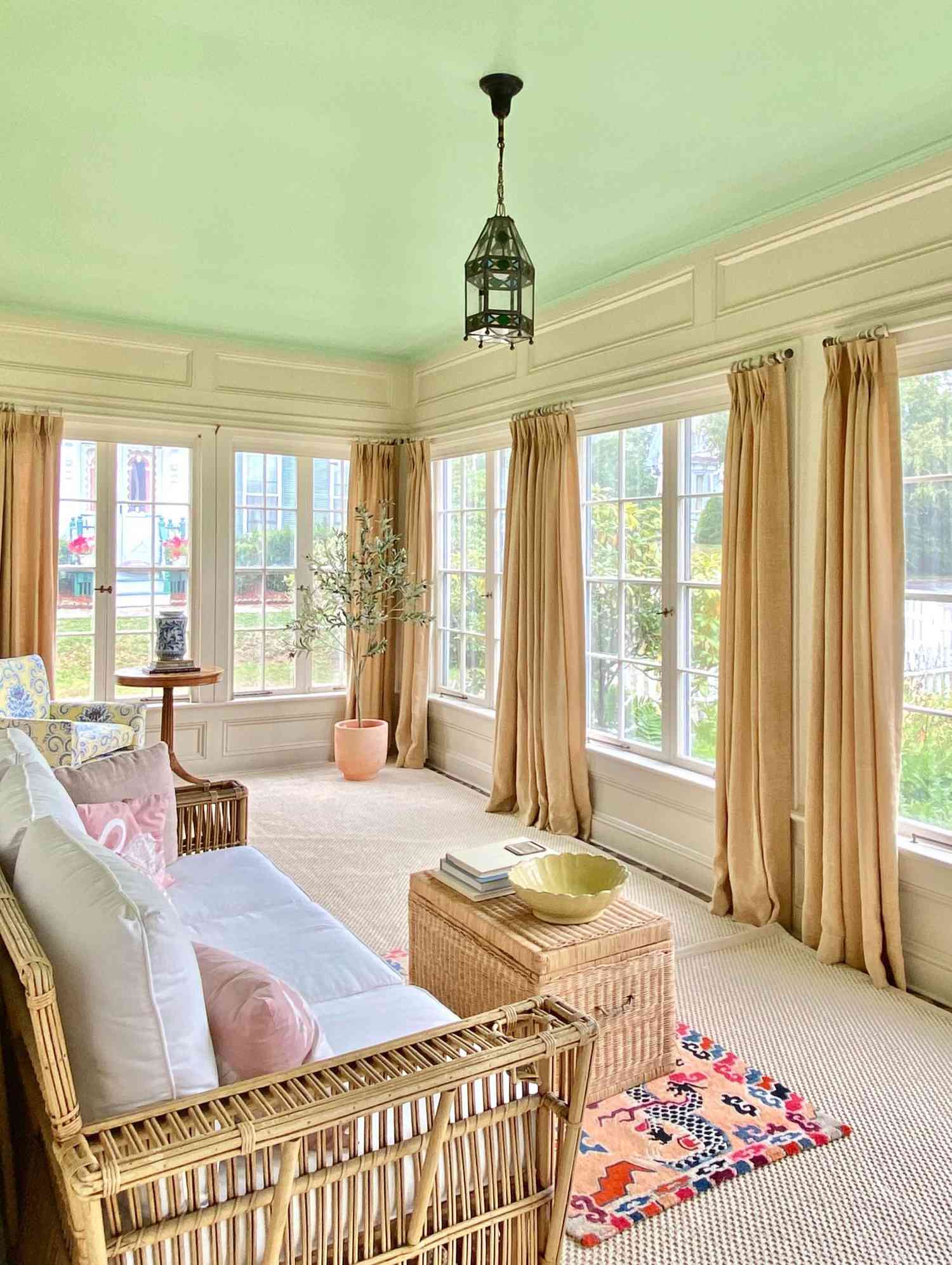Drapes and curtains are two widely used window treatments, offering both style and practical benefits such as privacy, light control, and temperature regulation. Although they share a common purpose, they are distinct in their features and functionalities. Both drapes and curtains come in various sizes, styles, patterns, colors, and materials, catering to different needs, preferences, and budget considerations. Selecting the right option depends on several factors, including the level of light filtration, desired privacy, and insulation requirements you seek for your space. By understanding the unique attributes of each window treatment, you can make an informed decision that perfectly complements your interior design and enhances the overall ambiance of your room.
Things to Consider When Deciding Between Curtains and Drapes
Fabric
One of the main distinctions between drapes and curtains lies in the type of material used. Drapes are typically crafted from thicker and more opulent fabrics, such as velvet, silk, or damask. These fabrics exude a sense of luxury and formality, and drapes are often lined to offer added insulation and light-blocking capabilities. They are well-suited for creating an atmosphere of quiet elegance in formal dining rooms, living rooms, or bedrooms. Drapes come in an extensive range of fabric options, including pleated, solid, textured, or patterned designs.
Length and Fullness
Another key difference between drapes and curtains is their length and fullness. Drapes are typically designed to be floor-length or even longer, creating an elegant and flowing appearance. The pooling effect on the floor enhances their ability to block out light and provide better insulation.
On the other hand, curtains are generally tailored to cover windows up to the sill or extend a few inches below it. This shorter and less full look imparts a casual and breezy charm to the room while allowing more light and air to filter through. However, curtains can also be designed to be floor-length if desired, offering more flexibility in their appearance.
Functionality
The functionality of drapes and curtains also sets them apart. Drapes are known for their ability to provide enhanced privacy, block out light and noise, and offer superior insulation. Their weight, length, and lining allow them to fit more closely to the window, leaving fewer gaps for light and air to penetrate. As a result, drapes are often preferred for bedrooms or meeting rooms.
Conversely, curtains are well-suited for spaces where a focus on natural light and gentle air circulation is desired. The lighter fabric of curtains allows for a softer ambiance, making them a suitable choice for living rooms or sunrooms.
Hanging and Supports
Both drapes and curtains share similar installation requirements. They consist of fabric panels that can be hung using rods and rings, grommets, valances, or fabric sleeves. However, drapes generally necessitate more robust rods and brackets to support their length, weight, and fullness, especially for a formal and elegant appearance. Curtain rods, on the other hand, can be more straightforward and informal in design, as curtains are lighter and require less hardware.
Cleaning and Maintenance
Cleaning and maintenance practices for drapes and curtains may differ. Due to their heavier fabric and lining, drapes often require professional cleaning or dry-cleaning, making them the more expensive and high-maintenance option. Even if cleaned at home, drapes are more challenging to remove from the rod and may occupy significant space in the washer and dryer, resulting in increased soap, water, and energy usage.
Cost
Cost is another important factor to consider when choosing between curtains and drapes. Drapes generally come with a higher price tag than curtains, as they often feature higher-end fabrics and linings. Achieving their fuller and longer appearance also involves purchasing more quantities of fabric.
Blackout Curtains vs. Drapes
Blackout curtains stand apart from regular curtains due to their specific purpose of blocking out light and sound. While they may seem similar to drapes at first glance, there are notable differences between the two.
Blackout curtains are crafted from a thicker and heavier material, featuring a simple and smooth surface design that effectively blocks out light and minimizes noise intrusion. On the other hand, drapes offer a more diverse range of fabric options and designs, often showcasing a more ornate appearance. The emphasis on specialized materials and light-blocking functionality makes blackout curtains generally more expensive compared to regular curtains or drapes, where the cost may vary depending on the chosen fabrics and design.
However, the combination of drapes and curtains can offer an excellent solution to maximize both style and coverage in a room. By pairing sheer curtains with drapes, you can achieve a dynamic interplay of light and privacy. When the drapes are open, sheer curtains allow natural light to filter in, creating an airy and bright atmosphere. Once the drapes are closed, you can transform the room into a cozy and private space, effectively darkening the area, reducing external noise, and regulating the indoor temperature. This versatile approach allows you to enjoy the benefits of both window treatments and exercise creative control over the ambiance of your living space.






